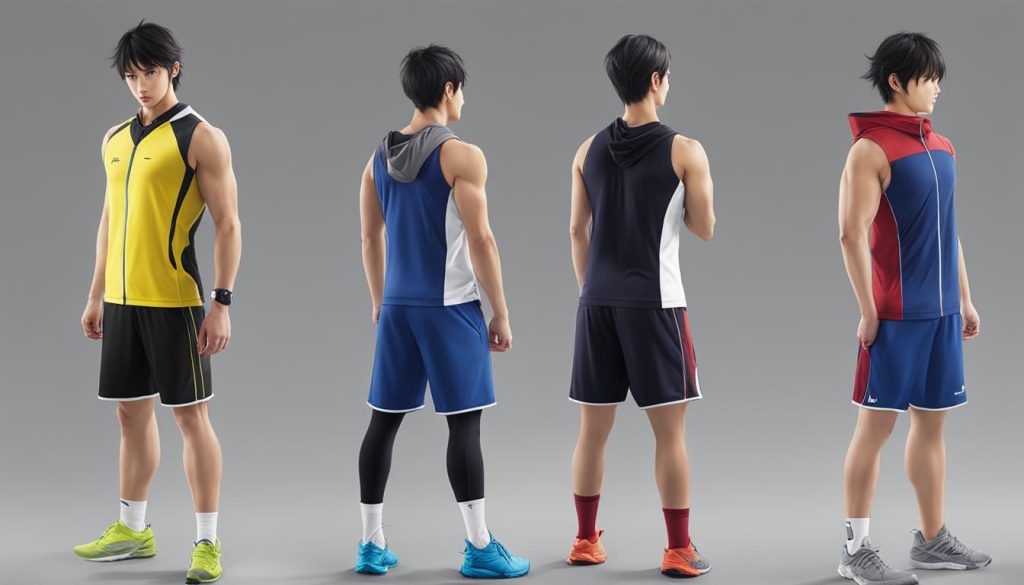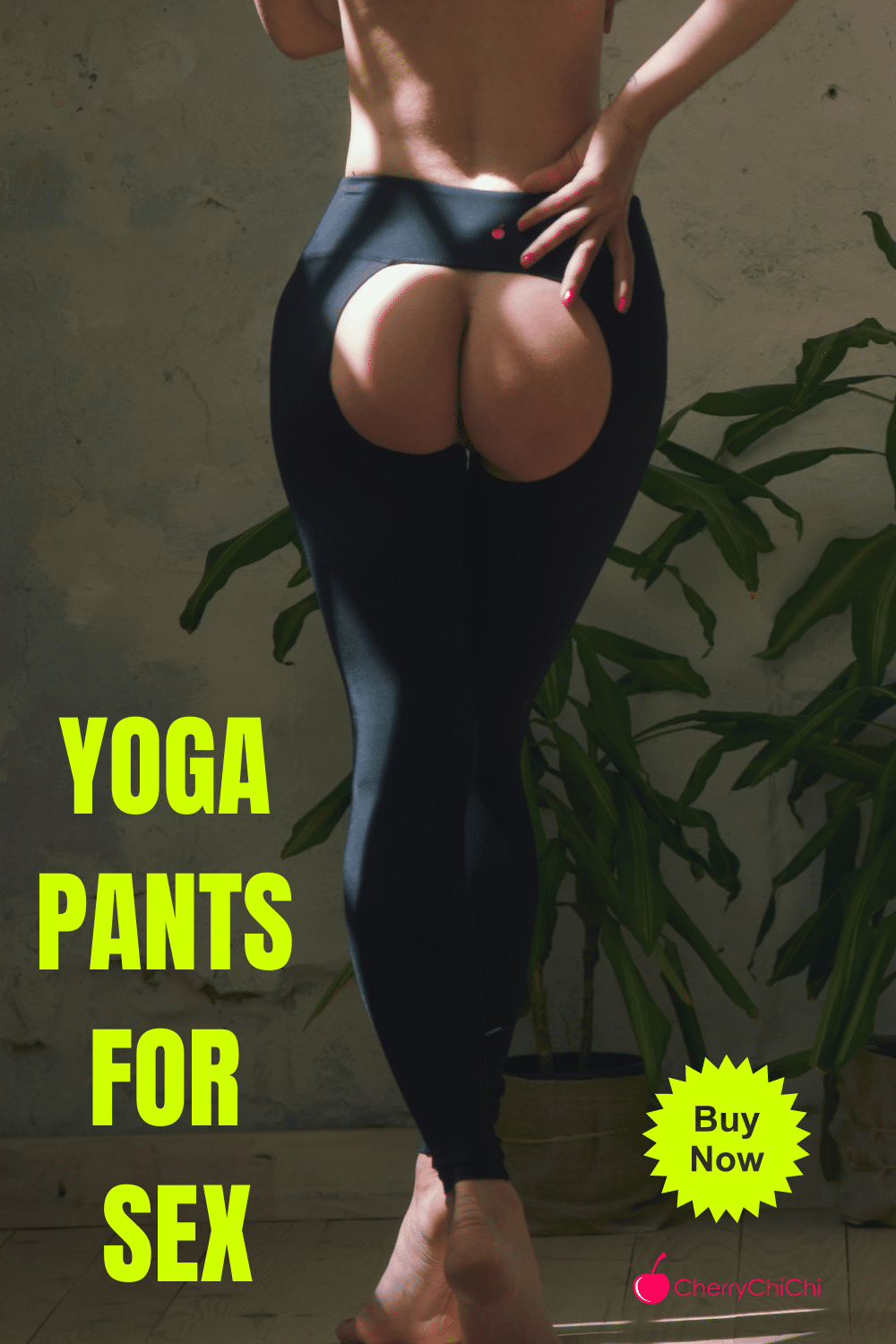
As a copywriting journalist, I have often been asked, “Can I wear yoga pants to swim?” This is a common question among fitness enthusiasts who want to combine their love for yoga with a refreshing dip in the water. In this article, we will dive into the topic and explore the facts surrounding yoga pants as swimwear. So, let’s unravel the truth and discover if yoga pants are indeed suitable for swimming.
Key Takeaways:
- Running tights may not provide the same support and comfort as swim tights, so it’s best to opt for swim-friendly yoga pants.
- Most yoga pants are acceptable for swimming as long as they are comfortable and do not restrict movement.
- Yoga pants made of polyester, nylon, or other synthetic materials are swim-friendly.
- Cotton-based materials, like cotton leggings, are not recommended for swimming.
- Proper swim attire made of non-absorbent materials is crucial for swim safety.
Are Yoga Pants Made of Swim-Friendly Materials?
When it comes to choosing yoga pants for water activities, one of the key considerations is whether they are made of swim-friendly materials. Swim-approved yoga pants are typically made of polyester, nylon, or other synthetic fabrics that are designed to be quick-drying and water-resistant. These materials offer the necessary flexibility and durability for swimming or any other water-related activities.
It’s important to note that yoga pants made of cotton or cotton-based materials are not suitable for swimming. Cotton leggings, for example, can become heavy and uncomfortable when wet, compromising both comfort and performance in the water. Therefore, it’s recommended to opt for yoga pants that are specifically designed for swimwear with swim-friendly materials.
In summary, if you’re considering wearing yoga pants for swimming or other water activities, be sure to choose swim-approved yoga pants made of synthetic materials like polyester or nylon. These materials are quick-drying and water-resistant, ensuring both comfort and performance in the water. Avoid cotton-based materials as they can become heavy and uncomfortable when wet. By selecting the right swim-friendly materials, you can enjoy your water activities with ease and style.
What About Running Shorts?
When it comes to choosing swimwear, many people wonder if running shorts are a suitable option. Running shorts, also known as compression shorts, are popular for their comfort and performance benefits during physical activities. But can they be worn for swimming?
It turns out that running shorts can indeed be a viable choice for swimming. These shorts provide a compression gradient that supports the muscles and enhances performance in the water. However, it’s important to select running shorts made of swim-friendly materials, such as polyester or nylon. These materials are quick-drying and water-resistant, ensuring that the shorts won’t become heavy or uncomfortable when wet.
While running shorts offer compression and performance benefits, they do not provide the same level of buoyancy as a wetsuit. Therefore, if buoyancy is a concern, it may be better to opt for a dedicated swimwear option. Nonetheless, for those who prefer the comfort and versatility of running shorts, choosing swim-friendly materials is crucial to ensure a safe and enjoyable swimming experience.
What About Running Shorts?
- Running shorts, also known as compression shorts, can be worn for swimming.
- Choose running shorts made of swim-friendly materials like polyester or nylon.
- These materials are quick-drying and water-resistant, ensuring comfort in the water.
- Running shorts provide compression and performance benefits but do not offer the same buoyancy as a wetsuit.
- Consider swimwear options if buoyancy is a concern.
The Modesty Debate: Can You Wear Yoga Pants in Public?
Wearing yoga pants in public has sparked an ongoing debate about modesty and personal choice. Some argue that yoga pants can be immodest, while others see them as a comfortable and acceptable choice for everyday wear. The question of whether or not you can wear yoga pants in public ultimately depends on individual preferences and cultural norms.
Modesty is a subjective concept that varies from person to person. Some individuals may feel more comfortable wearing loose-fitting clothing that covers their body, while others may prefer form-fitting attire like yoga pants. It’s important to consider the fit and style of the yoga pants to determine if they align with your personal comfort level and the environment you’ll be in.
When choosing to wear yoga pants in public, it’s important to be mindful of the occasion and setting. Yoga pants can be a versatile option for casual outings, running errands, or engaging in light physical activities. However, they may not be appropriate for more formal or professional settings where a more tailored and conservative dress code is expected.
It’s essential to respect individual choices and understand that what may be considered modest or immodest can vary depending on cultural context and personal beliefs.
| Pros of Wearing Yoga Pants in Public | Cons of Wearing Yoga Pants in Public |
|---|---|
| Comfortable and flexible | Perceived immodesty by some |
| Versatile for casual settings and light physical activities | Potential judgment or scrutiny from others |
| Wide range of styles and colors available | May not align with formal or professional dress codes |
Ultimately, the decision to wear yoga pants in public should be based on your personal preferences, comfort, and the specific context of the situation. It’s important to strike a balance between expressing your individual style and respecting the cultural norms and expectations of the environment you’re in. By considering these factors, you can make an informed decision about wearing yoga pants in public.
What Materials are Commonly Used in Sportswear?
When it comes to sportswear, the choice of materials plays a crucial role in determining the garment’s performance and overall comfort. Different materials offer various properties that cater to specific activities and sports. Here are some of the most commonly used fabric types for activewear:
Polyester
Polyester is a popular choice for sportswear due to its cost-effectiveness, durability, and quick-drying properties. It is known for its ability to wick moisture away from the body, keeping athletes cool and dry during intense workouts. Polyester fabric also retains its shape well and is resistant to wrinkles, making it ideal for garments that require frequent washing and wear.
Nylon
Nylon is another commonly used material in sportswear due to its durability and elasticity. It is lightweight and provides excellent flexibility, allowing for a full range of motion during physical activities. Nylon fabric is also quick-drying and resistant to abrasion, making it suitable for sports that involve a lot of movement and potential friction.
Spandex
Spandex, also known as Lycra or elastane, is a stretchy material that is often blended with other fabrics to provide flexibility and a snug fit. It offers exceptional stretchability, allowing sportswear to move with the body without restricting movement. Spandex is commonly used in compression garments and activewear that requires a close fit for optimal performance.
Other materials commonly used in sportswear include microfiber, which is lightweight, breathable, and resistant to wind and rain. Additionally, bamboo fabric and organic cotton are emerging as eco-friendly alternatives due to their sustainable properties. These materials offer moisture-wicking, softness, and thermal regulation, making them suitable for athletes looking for environmentally conscious options.
| Material | Properties |
|---|---|
| Polyester | Cost-effective, quick-drying, moisture-wicking, durable |
| Nylon | Durable, elastic, lightweight, quick-drying |
| Spandex | Stretchy, flexible, snug fit |
| Microfiber | Lightweight, breathable, wind and rain-resistant |
| Bamboo fabric | Sustainable, moisture-wicking, soft, thermal-regulating |
Each material offers specific benefits for sportswear, and the choice depends on the activity and personal preferences of the wearer. The combination of these materials and advancements in textile technology continue to drive innovation in the sportswear industry, offering athletes and fitness enthusiasts a wide range of options to enhance their performance and comfort.
How Do Different Fabrics Perform in Sportswear?
When it comes to performance characteristics, different fabrics used in sportswear offer unique benefits to athletes and fitness enthusiasts. Understanding these characteristics can help individuals make informed choices when selecting their activewear. Here, I will explore the performance characteristics of common sportswear fabrics:
Polyester:
Polyester is a popular choice for sportswear due to its cost-effectiveness, strength, and quick-drying properties. It is resistant to wrinkles and shrinking, making it durable and ideal for intense workouts. Polyester is also known for its moisture-wicking ability, pulling sweat away from the body to keep athletes dry and comfortable. Additionally, it offers good color retention, ensuring that sportswear maintains its vibrancy even after multiple washes.
Nylon:
Nylon is another commonly used fabric in sportswear, valued for its excellent durability and elasticity. It is highly resistant to abrasion, making it suitable for rigorous physical activities. The elasticity of nylon helps garments retain their shape and provides freedom of movement during workouts. Nylon also has excellent moisture-wicking properties and dries quickly, keeping the wearer comfortable even during intense exercise.
Spandex:
Spandex, also known as elastane or Lycra, provides exceptional stretchability and flexibility, allowing for a full range of motion during workouts. It is often blended with other fabrics to add stretch and form-fitting qualities to sportswear. Spandex is particularly popular in activewear designed for activities such as yoga, dance, and gymnastics, where flexibility and unrestricted movement are essential.
Microfiber:
Microfiber fabrics are lightweight and breathable, making them a popular choice for sportswear. They are woven from ultra-fine synthetic fibers that are soft to the touch and feel comfortable against the skin. Microfiber has excellent moisture-wicking properties, allowing sweat to evaporate quickly, keeping athletes cool and dry. It is also resistant to wind and rain, making it suitable for outdoor activities.
Each of these fabrics has its own advantages and is chosen based on the specific requirements of the sport or activity. By understanding the performance characteristics of different sportswear fabrics, athletes can make informed decisions to enhance their performance while staying comfortable and stylish.
The Role of Eco-Friendly Materials in Sportswear
As sustainability becomes a growing concern in the fashion industry, eco-friendly materials are making their way into sportswear. These materials aim to reduce the environmental impact of produc- tion while maintaining the performance characteristics required for activewear. By choosing eco-friendly sportswear materials, consumers can make a positive impact on the planet without compromising on style or functionality.
Eco-Friendly Options
One popular choice is the use of recycled synthetic fabrics. These fabrics are made from recycled materials such as plastic bottles or fishing nets, diverting waste from landfills and reducing the need for virgin resources. Recycled poly- ester and nylon are commonly used in sportswear, offering the same durability and moisture-wicking properties as their non-recycled counterparts.
Another eco-friendly material gaining popularity in sportswear is organic cotton. Unlike conventionally grown cotton, organic cotton is cultivated without the use of synthetic fertilizers or pesticides, reducing the environmental impact on soil, water, and air. It is also grown under strict standards to protect the health and well-being of farmers.
Bamboo fabric is another sustainable option that is finding its way into sportswear. Bamboo is a fast-growing plant that requires no pesticides or fertilizers. It is naturally resistant to bacteria and has moisture-wicking properties, making it an ideal choice for activewear. Additionally, bamboo fabric is soft, breathable, and hypoallergenic, offering a comfortable and eco-friendly alternative to traditional materials.
Companies in the sportswear industry are also investing in research and development to find more sustainable options for popular fabrics like polyester and nylon. This includes exploring bio-based alternatives and utilizing innovative production processes that minimize energy consumption and waste generation.
| Material | Sustainability Features |
|---|---|
| Recycled Synthetic Fabrics | Made from recycled materials, reducing waste and the need for virgin resources. |
| Organic Cotton | Cultivated without synthetic fertilizers or pesticides, reducing environmental impact. |
| Bamboo Fabric | Fast-growing plant, requires no pesticides or fertilizers, naturally resistant to bacteria. |
| Research and Development | Investing in sustainable alternatives for popular fabrics and production processes. |
By incorporating these eco-friendly materials into sportswear, companies and consumers can contribute to a more sustainable future. With ongoing innovation and a collective commitment to sustainability, the sportswear industry can lead the way towards a greener and more environmentally conscious future.
How Does Material Impact Swim Safety?
When it comes to swim safety, the material of your swim attire plays a crucial role. Wearing proper swim attire made of non-absorbent materials like polyester or nylon is essential to ensure a safe and comfortable swimming experience. These materials are designed to be quick-drying and water-resistant, preventing them from becoming heavy and uncomfortable when wet.
One of the key reasons for wearing swim-friendly materials is to prevent water-related injuries. Non-absorbent materials like polyester and nylon minimize the risk of excess water weight, which can impede movement and make it difficult to swim. They also reduce the chances of clogging pool or beach filters, helping to maintain a clean swimming environment for all.
Avoiding fabrics like cotton, which tend to absorb water, is important for swim safety. Cotton-based materials can become heavy when wet, making it harder to swim and increasing the risk of fatigue. Choosing proper swimwear materials not only enhances safety but also ensures better freedom of movement in the water, allowing you to swim comfortably and confidently.
Table: Swimwear Materials Comparison
| Material | Properties | Suitable for Swimming? |
|---|---|---|
| Polyester | Quick-drying, water-resistant | Yes |
| Nylon | Durable, elastic | Yes |
| Spandex | Stretchable, flexible | Not recommended as the sole material |
| Cotton | Absorbent, heavy when wet | No |
Table: Swimwear Materials Comparison
Choosing the right swimwear material is crucial for maintaining swim safety. While materials like polyester and nylon are ideal for swimwear due to their quick-drying and water-resistant properties, it’s essential to consider factors like comfort, fit, and personal preference when selecting your swim attire. By wearing the appropriate swimwear materials, you can enjoy a safe and enjoyable swimming experience.
Considerations for Modesty and Swimwear
Modesty in swimwear is a personal choice that is influenced by individual beliefs, cultural norms, and personal comfort levels. Some individuals prefer modest swimwear options as a way to cover scars or imperfections, while others may choose more revealing styles. It is important to respect and understand that modesty can vary from person to person and situation to situation.
When considering modesty in swim attire, it is crucial to find a balance between personal style and appropriateness for the intended setting. This may involve choosing swimwear that provides adequate coverage while still allowing for freedom of movement in the water. There are various modest swimwear options available, including swimsuits with longer hemlines, higher necklines, and additional coverage through the use of swim cover-ups or sarongs.
It’s worth noting that modest swimwear does not necessarily have to sacrifice style or comfort. Many companies now offer fashionable and functional modest swimwear designs that cater to different body types and personal preferences. By choosing swimwear that aligns with your modesty values and personal style, you can feel confident and comfortable while enjoying water activities.
Ultimately, the decision to wear modest swimwear is a personal one, and it is important to respect the choices of others. Modesty is subjective and can differ from person to person, and it is essential to create an inclusive environment where individuals feel comfortable expressing themselves through their swimwear choices.
| Benefits of Modest Swimwear | Considerations for Modesty |
|---|---|
|
|
Conclusion
After exploring the topic of wearing yoga pants for swimming, it is clear that although it is possible, there are certain factors to consider. The choice of material is crucial, with swim-friendly materials such as polyester and nylon being the most suitable options. These materials are quick-drying and water-resistant, ensuring comfort and freedom of movement in the water.
Furthermore, when it comes to swim safety, it is important to wear appropriate swim attire made of non-absorbent materials. This not only prevents clogging of filters but also helps reduce the risk of water-related injuries. By choosing the right material, we can ensure the safety and enjoyment of our swimming experience.
It is also essential to take into account personal preferences and cultural norms regarding modesty. Modesty in swim attire can vary greatly from person to person, and it is important to respect individual choices. Whether one prefers more revealing styles or modest swimwear, it is crucial to understand and appreciate that everyone’s comfort level and preferences differ.
In conclusion, the decision to wear yoga pants for swimming ultimately rests with personal comfort, preferences, and the intended purpose. By selecting swim-friendly materials, considering swim safety, and respecting individual choices regarding modesty, we can make informed decisions and enjoy our time in the water.
FAQ
Can I wear yoga pants to swim?
Yes, yoga pants can be worn for swimming, but they may not provide the same support, coverage, or comfort as swim tights. The material and waistband may be different, affecting the overall performance in the water.
Are yoga pants made of swim-friendly materials?
If yoga pants are made of polyester, nylon, or other synthetic materials, they are suitable for swimming. These materials are designed to be quick-drying and water-resistant, making them ideal for water activities. Cotton-based materials, such as cotton leggings, are not recommended for swimming as they can become heavy and uncomfortable when wet.
What about running shorts?
Compression shorts, also known as running shorts, can be worn for swimming. They provide a compression gradient and can improve performance in the water. However, it is important to choose swim-friendly materials, such as polyester or nylon, for running shorts used for swimming.
Can I wear yoga pants in public?
Yes, the decision to wear yoga pants in public is a matter of personal preference and cultural norms. Some argue that yoga pants can be immodest, while others see them as a comfortable and acceptable choice for everyday wear. It is important to consider the fit and style of the yoga pants to determine if they are appropriate for the intended setting and personal comfort level.
What materials are commonly used in sportswear?
Common materials used in sportswear include polyester, nylon, spandex, and microfiber. These materials offer flexibility, stretchability, moisture-wicking properties, and durability. Bamboo and organic cotton are also gaining popularity due to their eco-friendly properties.
How do different fabrics perform in sportswear?
Polyester is cost-effective, strong, and quick-drying. Nylon offers excellent durability and elasticity. Spandex provides exceptional stretchability and flexibility. Microfiber fabrics are lightweight, breathable, and resistant to wind and rain. Bamboo fabric is soft, odor-resistant, moisture-wicking, and thermoregulating. Each fabric has unique performance benefits for sportswear.
What is the role of eco-friendly materials in sportswear?
With sustainability becoming a concern, eco-friendly materials like recycled versions of synthetic fabrics, organic cotton, and bamboo are gaining traction in the sportswear industry. These alternatives aim to reduce environmental impact while maintaining performance characteristics.
How does material impact swim safety?
Wearing appropriate swim attire, made of non-absorbent materials like polyester or nylon, is essential for swim safety. It helps prevent clogging of filters and reduces the risk of water-related injuries. Using proper swimwear also ensures comfort and freedom of movement in the water.
What considerations are there for modesty and swimwear?
Modesty in swimwear is subjective and influenced by personal beliefs and cultural norms. Some may choose to wear modest swimwear to conceal scars or imperfections, while others may prefer more revealing styles. It is essential to respect individual choices and understand that modesty can vary depending on the situation and personal comfort level.









